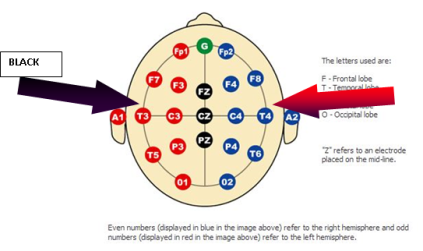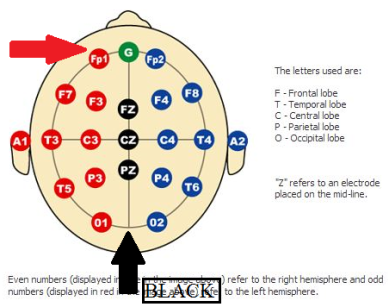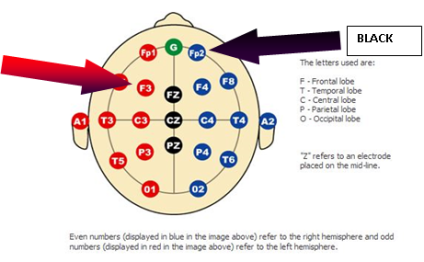Introduction
This blog post deals with a very important topic: treating depression with tDCS. If you know anything at all about transcranial direct current stimulation (tDCS), you surely know that it has been shown in studies and anecdotal reports to have very positive effect on many depression patients – ranging from those with dysthymia to persons with severe, debilitating, drug resistant depression. It does not work for everyone, but what treatment does?
The beauty of tDCS is that it is incredibly simple, has a spotless safety record, has no significant side-effects, and with a little training can be used by a depression sufferer at home or wherever convenient.
Lets review some sobering facts: depression is a worldwide epidemic. In the US alone, over 14 MILLION people suffer with some form of a major depressive disorder. About 1 in 10 adults now use some form of an antidepressant. Further, about 40,000 people per year commit suicide. (CDC)
What the numbers don’t tell you is that many suffering with depression don’t receive effective treatment – either because they don’t have access, can’t afford it, or commonly, are afraid of the public stigma of having to deal with a brain disorder. And lets be clear depression is a brain disorder. For some, it can be treated effectively with “talk” therapy. But for many, depression is rooted in a brain physiology and chemistry problem and needs to be recognized and treated as such.
It really bothers me that mental health professionals are still mostly oblivious to the existence of tDCS and its potential benefits for the depressed. Every mental health professional should be aware of tDCS and use it when it seems appropriate – perhaps before or in conjunction with drug therapy.
Three Examples of tDCS Depression Treatment Montages
tDCS involves placing electrodes on the head and passing a very tiny direct current through them in order to achieve a desired effect. Because the causes of depression are individualized, an electrode placement that works for one individual may not work for another. Current level may also need to be adjusted. It’s important that a depression patient being treated with tDCS be monitored to make sure progress is being made as treatments continue. If no improvement is detected after a few treatments, it may be time to try one of the other depression montages.
A normal depression treatment protocol is for 20 – 25 minutes of tDCS at 1, 1.5, or 2 mA at least 5 days per week for 30 days. Treatment is sometimes continued for an additional 30 days for maximum result. “Booster” treatments can be administered at anytime in the future as needed if depression symptoms begin to reappear. Some individuals are unable to tolerate 2 mA tDCS due to skin irritation.
Depression Montage #1
The anode (+ lead) electrode is placed high on the left forehead while the cathode (- lead) electrode is placed on the right forehead. This is the most commonly used depression montage.
Depression Montage #2

The anode (+ lead) electrode is placed over the right temple while the cathode (- lead) electrode is placed over the left temple. This montage is interesting because not only can it alleviate depression, it is associated with improvements in intuitive thinking.
Depression Montage #3


The anode (+ lead) electrode is placed over the left forehead (supraorbital region) and the cathode ( – lead) is placed over the occipital region (middle of the back of the head, about even with the ears.) This is a recently published montage that showed very promising results in a small study.
Helpful References
If you are new to tDCS, may I suggest you at least examine the below:
3. www.transcranialbrainstimulation.com
4. www.pubmed.gov (search for tDCS)
tDCS Devices
tDCS devices are entering the marketplace with increasing frequency. Here are some suggested consumer level devices to examine (in no particular order):
1. www.foc.us (buy with accessory kit)
4. www.trans-cranial.com/tct/end-users-patients/tdcs-stimulator-products
There are many more tDCS devices in the market, including impressive, expensive, professional models.
Conclusion
Its time for mental health professionals to get serious about helping their patients needing more than talk therapy with something other than a prescription drug. There is plenty of evidence and anecdote that tDCS can help many depression patients at the same level or better than medications – without all the side-effects and expense. Do some research, attend a conference, speak to doctors now using tDCS and help end the epidemic of depression.

FEW MONTHS AGO I STARTED USING FOC.US TDCS INSTRUMENT THAT I PURCAHSED OVER THE NET. DURING THAT WEEK I RAN INTO A VERY FRIGHTENING EXPERIENCE OF DIFFICULTY TO CONCENTRATE, ANXIETY, AND I HAD TO ISOLATE MYSELF FOR 2 DAYS TO SORT OF RECOVER. I HAD OTHER FCATORS THAT MIGHT CAUSE THESE PHENOMNAS- DICFFICULTIES IN RELATIONSHIP, EXHAUSTION FROM LACK OF SLEEP AND DEEP ECONOMICAL TENSION. STILL I MUST REPORT THIS TO ENRICH THE GENERAL KNOWLEDGE, SINCE FOC.US THEMSELVES DID NOT CARE TO RELATE TO ANY MAIL I SENT THEM..
BEST WISHES TO ALL OF YOU
I have been using the fisher wallace device but had to stop it after 4 months of use
Be very careful with self administering this.
I am now applying to go to a TDCS trial being done in Sydney, Australia.
Think it is better to have a medical person experienced in this.
I agree it is always desirable to have a medical professional in the loop if at all possible.
Brent
Russell, not sure where you live, but there is a tDCS trial running in Singapore that could be an alternative option for you. Good luck!
I’ve been seriously experimenting with tDCS for the last month and have found it to be an absolutely wonderful tool. I started having anxiety/depression problems at the age of 13 and over the years have tried numerous medications and alternative methods, but I must say that tDCS is by far the best of them all. At first I used the depression montage with anode at F3 and cathode on the right shoulder and I got some moderate relief. Several days ago I decided to try montage #1 (anode – F3, cathode – Fp2) and this has proved to be nothing short of miraculous. Not only is it wiping away my depression, but it’s also taking care of the social anxiety I’ve had for years. tDCS is by far the best overall treatment I’ve experienced.
Brent, you’re doing a great service by getting the word out. I agree wholeheartedly, that doctors should have tDCS in their toolbox of treatments for depression. Unfortunately, methods like these will never be first line treatment because you can’t bottle and sell it. The cost of a pill in relation to what you can sell it for will always generate the most profits. I love America and its capitalism, but you don’t want to be depressed in a capitalistic economy, unless you’re prepared venture out alone and use alternative methods. Sadly, the mainstream route I’ve been through falls well below adequate.
Thanks for your note. I’ve heard comments like yours over and over. That’s why I believe tDCS should be in the “toolkit” of every professional who treats depression patients. It’s simple and for most (not all) seems to work!
Brent
It seems to work perhaps because it stimulates the ventral midbrain, which in turn has an effect on your dopaminergic neurons.
Here is an interesting science blog article on this:
http://www.smallerquestions.org/blog/2013/6/17/hey-boy-you-really-activate-my-ventral-midbrain.html
Hi Alan, just wanted to know if the TDCS was a long term fix for your depression and social anxiety? I have the same issues. I’m 2 weeks in and hoping for some positive results.
What with all these sites showing cartoon graphics that don’t demonstrate the physical positions from a side-view (left AND rigtht)? Very frustrating when you are trying to place the electrodes correctly. We need someone to post real life pictures of pad placement.
Hello Sir,
Thank you for your great site.
Please, I am wondering why you feel so strong of the foc.us device. Is it because it is so beautiful, which is nice? I am trying to compare the transcranial device which seems more useful to the layman eye and when I compare with all the extras of electrodes and all, the price is almost the same. The transcranial also provide great information just like on your site. But I am concerned about information on the focus site.
But the focus is very sexy, like you say, so I am very attracted. But many other people warn against it. I am trying to decide.
I am hoping to improve my mood, and also I want to become better at math.
Thank you in advance for you advice
Hi Rohit,
I like the foc.us headset because it is very versatile and portable. You can use the built-on electrodes if you like and can also plug in external electrodes if desired. It’s easy to control with a iOS device using its Bluetooth capability. I agree that support on the foc.us we site is weak, but I like the product and use it frequently.
Brent
Thanks to Brent and everyone else who has contributed here. I’ve spent about 12 hours in the last couple days researching this topic since reading about it/Brent in Wired. Trouble is I am in no way a DIY’er. The conditions I want to address are chronic pain (trigeminal neuralgia, though it’s not intense at the moment, just “low grade”) and long term depression. So my first question is: can you treat two conditions, one after the other, simultaneously, or how would that work?
Secondly, I seem to have three choices for a tDCS device and there’s a time limit pending.
1) I like the Cognitive Kit: pretty basic, but it comes with everything you need. But Keith Spaulding, the guy who makes them, is sold out and says he might have another small shipment on September 10. I emailed him, but no response yet. Cost $200 plus shipping, if it’s even available. Brent gave this device a favorable review.
2) The Brain Stimulator ($90) seems adequate, but it comes with no accessories which would add around 50% to the cost, including the Amrex sponges, and I can’t find any “reviews” of it.
3) The ActivaDose II is $295 at Scriphessco, but with 10% off and free shipping through Labor Day if purchased by a health professional. (I have a friend who could do that.) It’s the device used by Dr. Fugedy in Atlanta, where he has a whole practice dedicated to tDCS. He gives the Activa to his patients for permanent home use as part of a regimen ($2400) involving visits, tutoring, skype conferences, etc. However, the device comes by itself at that price and I don’t even know (besides the electrodes) exactly what connections I should buy with it.
What to do? Constructive comments welcome. The conditions I’m fighting have been quite resistant to traditional medicines so I’m very committed to trying tDCS. I’m also part of a support group for trigeminal neuralgia and I’m sure all of them would be interested.
Thanks again.
Daniel
Hi Daniel,
Any of the three you mention will do the job of delivering 1, 1.5, or 2 mA to a pair of sponge electrodes. Amrex 3x3s are preferred – and as you mention, different adapters may be needed depending on the tDCS device you buy.
Best of luck with your treatment.
Brent
Looks like a tdcs device for alzheimers being developed http://ybrain.com/a-team-of-korean-neuroscientists-and-engineers-develops-wearable-tech-to-combat-effects-of-alzheimers-2/ http://techcrunch.com/2014/08/27/ybrain-raises-3-5m-to-fund-trials-of-its-wearable-for-alzheimers-patients/
I hope this is not a silly question. I see you recommend the Amrex 3x3s but what if you have a small head? I am a woman that has to buy smaller caps and hats, a lot of adult size hats and such do not fit me. Would the Amrex 2x2s be better for me? I even measured my head and I guess you can say I have a petite size head. I don’t think I have seen this question on here. Thank you so much!
I have had depression and anxiety since age 13 ( I am now 47 ) and mainstream medicine in my rural area has not helped much at all. I also have fibromyalgia.
The sponge area of Amrex 3x3s is actually 2×2. If you use a smaller sponge, you might need to reduce current in order to avoid skin irritation.
Brent
Hello, Brent. I realize this repeat a previous poster’s comment, but where is the best place to find how to locate the various points on the 10-20 positioning system? Correct placement IS critical, is it not? The round-head-from-above diagrams do not seem to help me much. A three-dimensional view would be much more beneficial. I’ve seen videos where technicians are using tape measures to determine the different points, with percentage specifications, which makes it all look intimidating. Then I see other accounts that say, “Put this electrode over your eyebrow, the other one high on the head, etc., etc.” which makes it seem rather simplistic. diytdsc.com seems to have some information here, but is there an overall best place to look? Thanks in advance.
I found the answer my own question. (I hope.) Although your (Brent’s) illustrations and directions in part 4 of the Foc.us review were definitely helpful, I found a 10/20 System Positioning Manual at
Click to access 10_20_pos_man_v1_0_pdf.pdf
It goes into detail about “mapping” your head to determine the various “nodes.” Thanks to all for your comments.
Reblogged this on Fengxiaoping's bubble and commented:
看到评论吓傻了…
How do the electrical charges penetrate the skull to get to the brain?
Your skull is quite porous and filled with liquid.
Brent
where did you get these montages? I never seen the red to be placed on the right side as in #2 slide has anyone here tried any of these?
tDCS not being known & used is not almost criminal it is worse than that, I am seeking it professionally does anyone have any recommendations in the UK or USA?
interesting documentary on netflix called my wonderfull broken brain. About a lady in her 30s who had a stroke. She lives in England. In the documentary she does a trial with tdcs and the last session she had a siezjure, she had a major stroke and still under a year doing the trial. So they stopped it for her but the interesting thing is she show improvement by 50% in learning and memory from her base line. So I would say this is a real tool that needs to be looked at and studied by the Major Universities. I hope some country like UK or Germany, Norway take it into consideration for their National heallthcare and get the proper studies because the drug companies dont want this therapy out there. It works for my depression and have to say no side effects after one year.